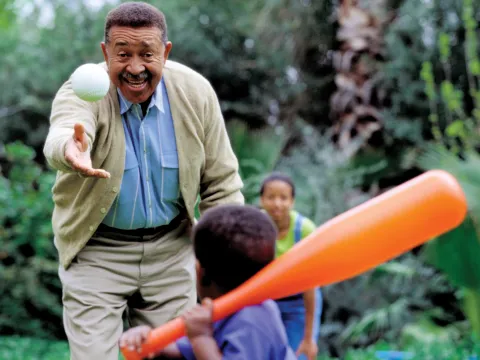- AdventHealth

If your favorite place to go after your run is onto your couch, you’re missing an opportunity to use a cool down routine to become a better runner.
Adding more to your routine may sound overwhelming, but whether it’s 10 minutes or an hour, the time immediately following your run is a window of opportunity to improve your flexibility, strength and overall athleticism.
The Purpose of a Cool Down
Generally speaking, the purpose of your post-run cool down routine is twofold: to transition to a resting state more efficiently and improve athleticism by working on dynamic flexibility and strength.
A cool down routine can slowly allow the heart rate to return to normal and shuttle working blood from muscles back to the heart. This allows us to decompress after a run and transition back to normal daily activities.
Cool down routines can vary dramatically in terms of length and complexity. While an elite runner may do an hour of dynamic flexibility or strength work after a run, most recreational runners will need a routine that is more condensed. Consistency with your routine is more important than length.
Ideally, your post-run routine is the final component of “sandwiching” your run – meaning you perform both a pre-and post-run routine with your run “sandwiched” in the middle. While a pre-run warmup is more geared toward loosening you up, your post-run routine may involve more variety since you are already warmed up from your run.
Depending on the type of cool down routine you perform, you may work on anything from flexibility and balance to strength building. The length and purpose of your workout is up to you, but it all contributes to the same goal: becoming a strong, efficient, athletic and less injury-prone runner.
Cool Down Activities
“Cool down” is a broad term that can encompass a variety of activities. Depending on the type of run, your cool down may begin within the run itself or immediately afterward. If you are running a tempo run, hill workout or interval session, your run will usually include some easier miles after the harder effort. This typically ranges from 1 to 3 miles but could be shorter or longer depending on your training plan.
After you complete a harder effort, it’s always important to transition gradually to a resting state rather than stopping abruptly. Without that easier running (or even walking after a race), you might end up feeling lightheaded or nauseous as your circulation recalibrates from the workout.
What we will mostly focus on here is the cool down that begins once your run is complete. Adding a post-run routine that is complementary to your running is an effective way to keep you strong and flexible, and make the next run feel a little easier.
Types of Cool Down Routines
Cool down routines run the continuum from passive to active, though being passive should never involve sitting on your couch for several hours (no matter how tempting). A more passive option might involve an ice bath or warm soak in Epsom salts, or even a professional massage with proper safety measures in place.
From less to more intensive, here are some of the most effective post-run options to incorporate every week.
Foam Rolling
This is a great way to loosen up tight muscles after a run. You can take a few minutes to target specific areas, or do a more generalized routine if you have the time.
Static Stretching
While the jury may still be out on the importance of static stretching, if it’s something you enjoy do it with loose, warm muscles after a run.
Dynamic Stretches and Mobility Work
Static stretching involves holding one position for an extended period of time, but dynamic stretches work a muscle group through movement. Leg swings, lunging and twisting and knee-to-chest are all examples of dynamic stretches.
Form Drills
They may look silly, but form drills are great way to increase athleticism, reinforce proper mechanics and improve form. High knees, A- and B-skips, carioca and butt kicks are just a few of the types of drills you can perform.
Core Routines
Core work helps strengthen your foundation and make you a more athletic runner. A strong core (which includes the front, back and sides of your entire mid-section) will help you maintain form as you fatigue in a race or long run.
Bodyweight Strength Training
If you’re new to strength training, bodyweight exercises are a great place to start and can be a good workout or segue into training with heavier weight.
Lifting
If you really want to increase your strength and power, gradually increase your lifting weight. Good form is essential to safe lifting, so make sure you seek out knowledgeable assistance before you get started.
Planning and Scheduling Your Cool Downs
With so many options available for cool down routines, knowing when to schedule them is essential to getting the most out of every workout. While the routines listed above may look daunting to perform on a regular basis, the key is to remember that they don’t need to be long and complicated to be effective.
Tips to Plan Your Post-Run Cool Down Routines
Use these tips to make cooling down part of your regular routine.
Keep the Easy Days Easy
When you have an easy or recovery run on your schedule, it’s there for a reason. Your body needs time to repair itself from harder efforts. This is not the time to do an hour-long weight lifting routine after your run.
Recovery run days are a great time for foam rolling, dynamic mobility work or a short core session. More intensive strength sessions are best done after a moderate effort run, or a short, intense workout rather than after a long run.
Consistency Over Length
If you are new to any sort of cool down routine, start with just 5 to 10 minutes, 3 days a week. Build a habit of doing some sort of routine after your runs. As the habit becomes more ingrained, try to do something after every run, even it’s only for 5 to 10 minutes. On days you have more time, try to incorporate a longer flexibility or strength routine.
Including Variety and Progression
As you become more consistent with your cool down, remember to maintain variety. Rotate between the intensity of routines depending on your run that day. As the routines become familiar, add new movements or exercises to challenge your body in new ways. A progression of intensity in your strength routines will encourage your body to adapt and make you stronger.
Cool down routines take many forms, but when you incorporate them into your training, they can all help you achieve the goal of faster, stronger healthier running. If you need help to support your health and fitness journey, our expert network of care is here to guide you with extra safety measures in place to protect your whole health.




